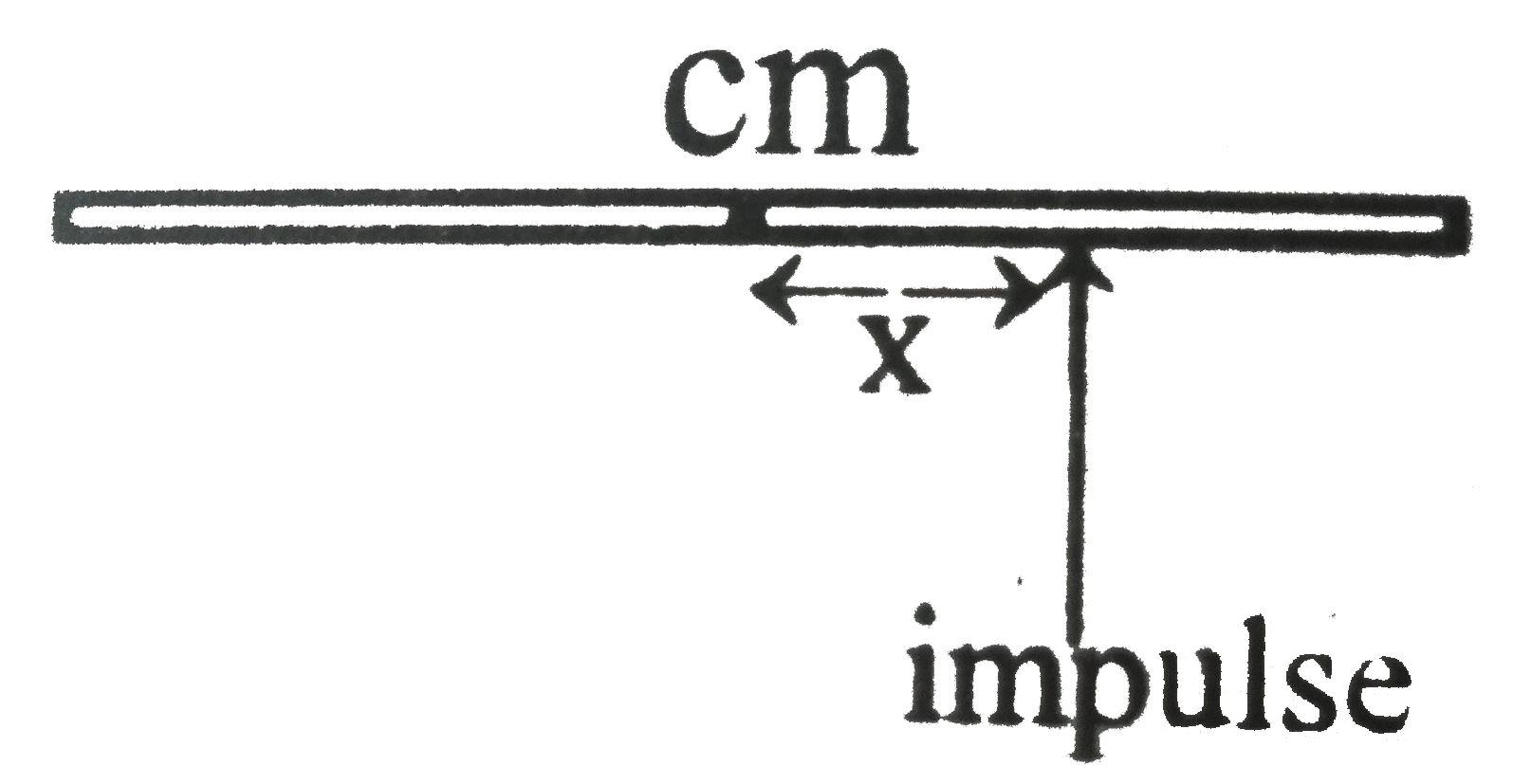There is one rod of length L. the resistivity of its material is given by ρ=αx+β. Here x is the distance of α point on rod from one of its ends. Assume A as the area of cross section of rod. Find the electrical resistance of the rod.

A segment of length dx of the rod is selected at a distance x from on end of the rod. We can assume resistivity for this segment of length as constant . Hence resistance of segment can be written as follow.
dR=ρdxA⇒dR=(αx+β)dxA
All such segments can be considered as several resistances connected in series with each other. in series combination all resistance are directly added . Hence dR can be integrated directly for total resistance
R∫0dR=1AL∫0(αx+β)dx
⇒R=1A[αx22+βx]L0
⇒R=1A[αL22+βL]
Topper's Solved these Questions
- BOOK - MODERN PUBLICATIONCHAPTER - CURRENT ELECTRICITYEXERCISE - PRACTICE PROBLEMS71videos
CURRENT ELECTRICITY
- BOOK - MODERN PUBLICATIONCHAPTER - CURRENT ELECTRICITYEXERCISE - CONCEPTUAL QUESTIONS35videos
CURRENT ELECTRICITY
- BOOK - MODERN PUBLICATIONCHAPTER - ATOMS EXERCISE - Chapter Practice Test16videos
ATOMS
- BOOK - MODERN PUBLICATIONCHAPTER - DUAL NATURE OF RADIATION AND MATTER EXERCISE - CHAPTER PRACTICE TEST15videos
DUAL NATURE OF RADIATION AND MATTER
Similar Questions
Knowledge Check
- Question 1 - Select One
A metal rod of area of cross section A has length L and coefficient of thermal conductivity K the thermal resistance of the rod is .
ALKABKLLCKALDAKL - Question 2 - Select One
A uniform thin rod of length l is suspended from one of its ends and is rotated at f rotations per second. The rotational kinetic energy of the rod will be
A23π2f2ml2B43f2ml2C4π2f2ml2Dzero - Question 3 - Select One
A uniform thin rod of length l is suspended from one of its ends and is rotated at f rotations per second. The rotational kinetic energy of the rod will be
A23π2f2ml2B43f2ml2C4π2f2ml2DZero
The specific resistance of a material of wire changes as ρ=ρ0x along the length of the conductor whose area of cross section is constant and equal to A. Here x is the distance of point on conductor from one end of the wire. Calculate its electric resistance. (Given the length of the wire is L)
View SolutionA rod PQ of length L revolves in a horizontal plane about the axis YY´. The angular velocity of the rod is w. If A is the area of cross-section of the rod and r be its density, its rotational kinetic energy is
View SolutionA uniform rod of length l is given an impulse at right angles to its length as shown. Find the distance of instantaneous centre of rotation from the centre of the rod.
 .View Solution
.View SolutionThe dimensions of lKA are (l is the length of rod, K is the thermal conductivity of rod and A is the area of cross-section of rod)
View SolutionThe area of cross-section of rod is given by A=A0(1+αx) where A0 & α are constant and x is the distance from one end. If the thermal conductivity of the material is K. What is the thermal resistancy of the rod if its length is l0?
View Solution
